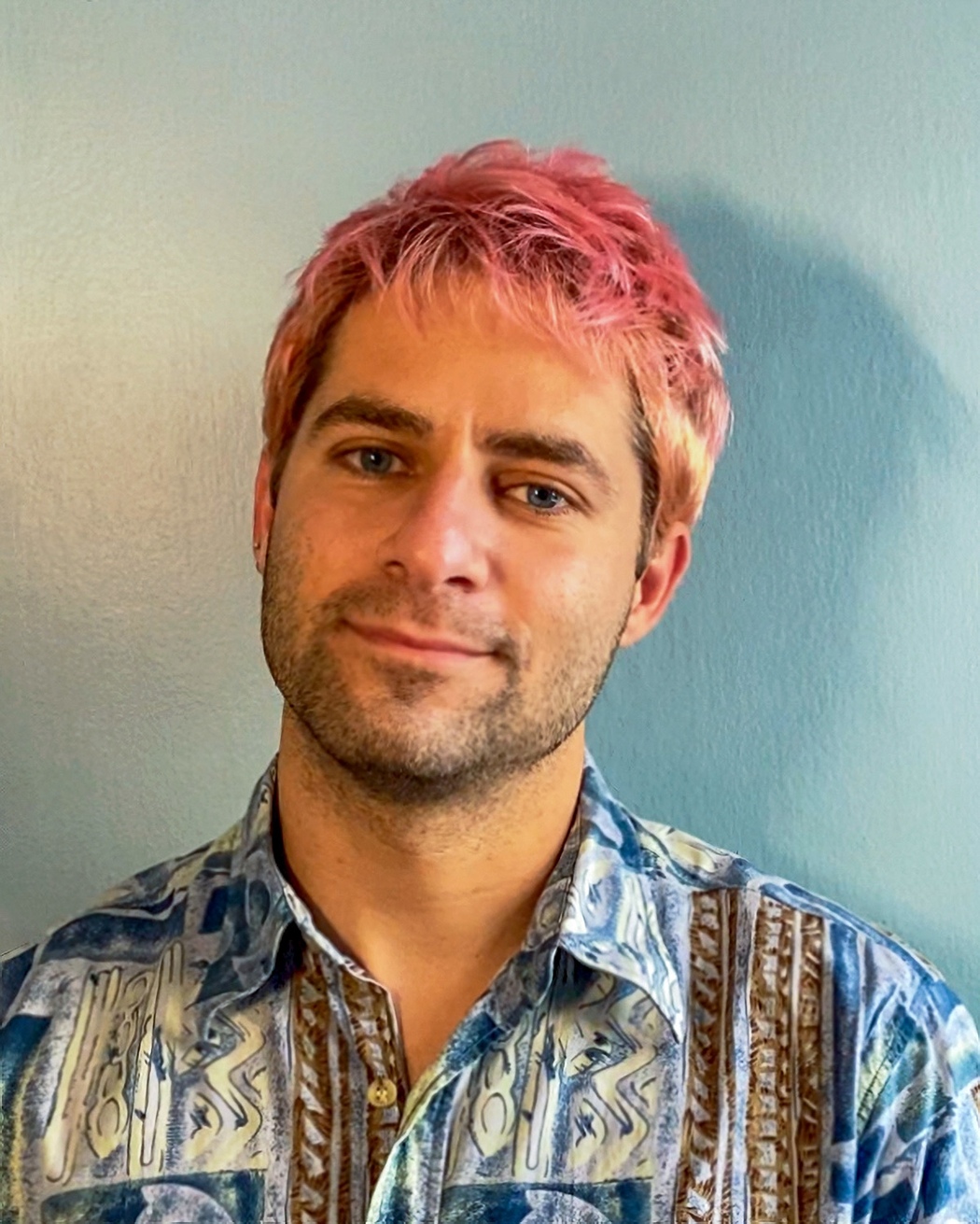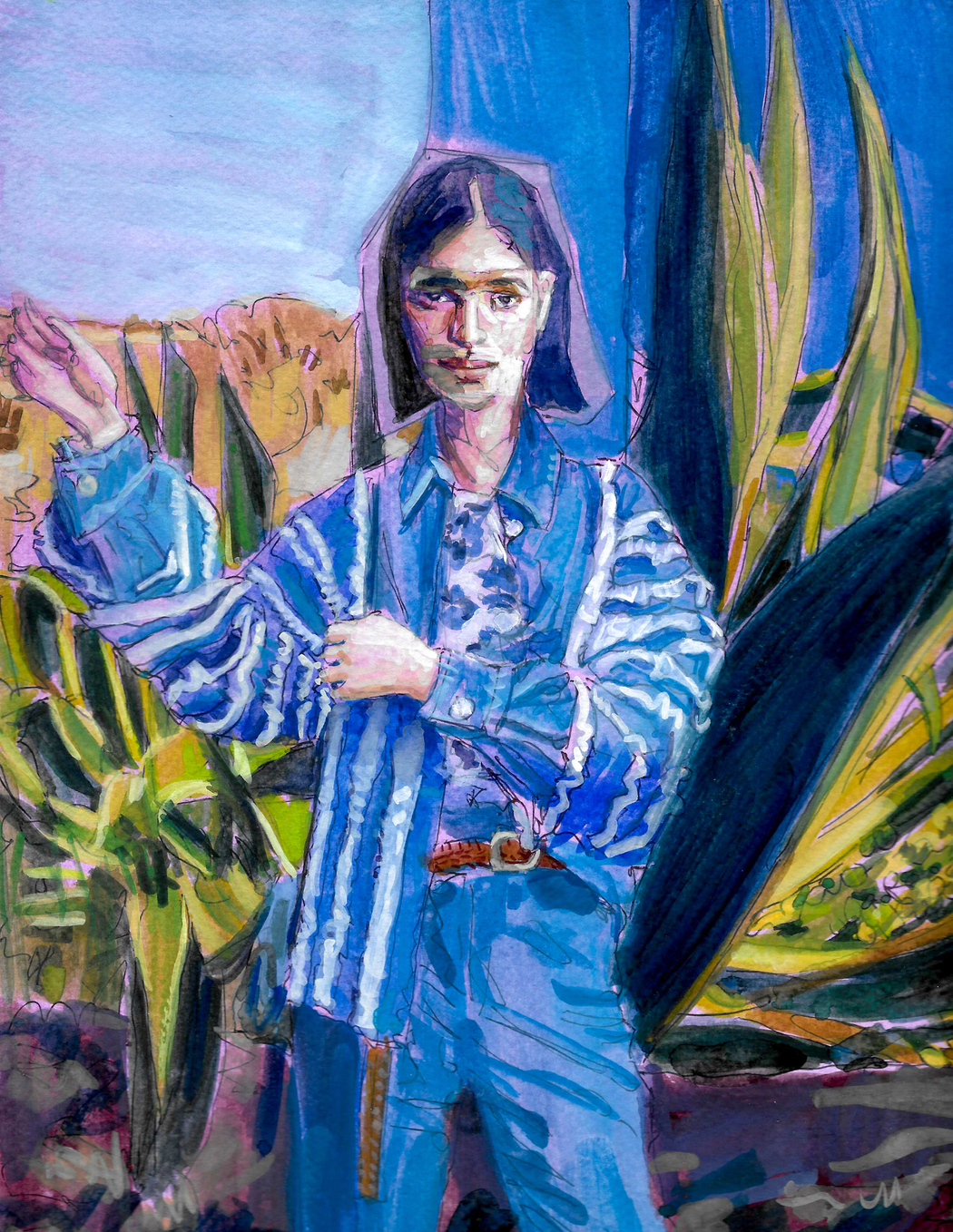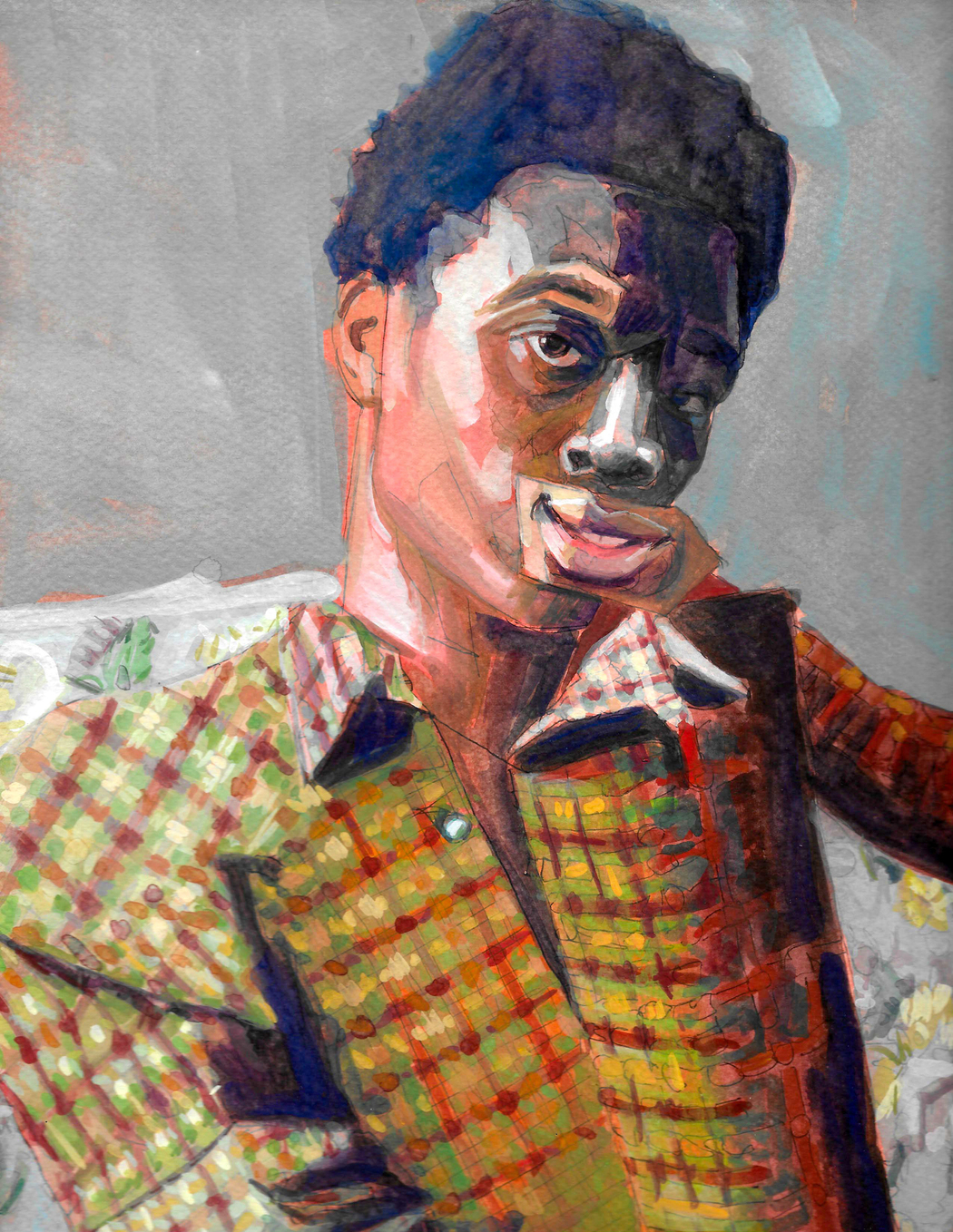Cameron Meade
Year of birth: 1990
Where do you live: Brooklyn, NY
Your education: 2016-2018 MFA with Distinction, Painting & Drawing, Pratt Institute, Brooklyn, NY, 2008-2013 B.A.S. Stanford University, Psychology and Physics, Palo Alto, CA
Describe your art in three words: Playful and vibrant
Your discipline: Painting
Website | Instagram

Your background in both Psychology and Physics is quite unique for an artist. How do these fields influence your creative process and the themes you explore in your paintings?
Before pursuing an art career I was a researcher in computational biology. Funnily enough I think that experience trained me well for my creative pursuits. Research is a cycle of conducting experiments, analyzing results, determining which outcomes warrant further investigation, and repeating until you arrive upon a novel and significant conclusion. One must continually self-assess to ensure the work is approaching something worthwhile, while inevitably discarding inconsequential results without dwelling on missteps. It is necessary to be steadfast yet flexible, thorough yet efficient, meticulous yet observant. There are no clear and apparent benchmarks; one is very much treading their own path, entirely self-motivated. The creative process really benefits from the same self-awareness, nimbleness, and grit.
My background in Physics informs the ways in which I conceptualize and represent physical space. Cognitive Psychology — the study of how the human mind perceives, processes, and interprets information — influences how I compose and paint my images.
You’ve mentioned that your work is inspired by fashion editorials. Can you elaborate on how fashion influences the colors, patterns, and textures in your artwork?
l’ve always been inspired by the artistry in fashion editorials. I’m a gay who came of age watching fashionTV and who — to this day — collages torn-out pages from print magazines into my journals. Back when vogue.com was still style.com (and you didn’t have to subscribe to the magazine to have access), I’d pore over the season’s latest runway shows, delighting over the clothes, styling, and atmosphere, which would inevitably recur in ads and editorial features. It was never about merchandise for me; I was in it for the creativity, the intrigue and fantasy evoked through just an image.
This interest prompted me to draw from fashion editorials as source material. In photoshop, I loosley collage varied parts from numerous images to create figures and environments. Some of the decisions I make are influenced by styling; there’s a playfulness and whimsy to the clothes and characters I represent. The colors, patterns, and textures in particular contribute to the lively tone of my work.
 Cameron Meade, Piecewise 4, 2022
Cameron Meade, Piecewise 4, 2022
Your art is described as a balance between representation and abstraction. How do you decide where to draw the line between these two elements in a particular piece?
This balance between representation and abstraction in my art has a lot to do with cognitive psychology, the study of how we internalize the outside world. Quick lesson — we are constantly taking in innumerable stimuli from the environment through our senses but we are not capable of attending to it all. To manage, our minds filter this endless flood into digestible amounts of information, disregarding most of what we intake in the process. For example, even though the street noise outside my apartment remains present, I’m not continuously aware of it while I sing along to my music. Or more illustrative for this question — we will likely register a rough square with five rectangular appendages as a hand if it is situated near a rendering of an arm. If it’s contextualized by a body, the “hand” doesn’t need to be super detailed to be informative. I’m making use of these cognitive tricks that we rely on to perceive the world to produce my art.
Because of this understanding, often my “arting” philosophy is “good enough is great.” I don’t want a fussy painting. A bunch of near approximations blend harmoniously.
You paint imagined subjects with elements from editorial photographs. How do you select the source material, and what role does imagination play in transforming these elements?
There’s a couple blogs I go to that have been posting fashion photography from publications all over the world for at least a decade. I comb through their endless archives and save images that interest me. My selection process is fairly intuitive. My eye may catch a posture, pattern, or lighting, etc. This collection is then the playground for my imagination. I clip, transform, and combine to produce my unique image.
I definitely refer to the mock-ups I create but also allow myself to be imaginative while I paint. It’s more of a starting point than a destination.
 Cameron Meade, Piecewise 1, 2022
Cameron Meade, Piecewise 1, 2022
Your artist statement reflects a playful approach to your work, emphasizing spontaneity and the absurd. How do you maintain this sense of playfulness in a world that often demands seriousness?
I grew up in a traveling circus because my parents were clowns. It was their job to react to the world with levity and humor wherever we went. Circus-life trained me to appreciate spontaneousness and absurdity. Ok, that’s a complete lie.
Mainly, it’s just authentically who I am; I’m serious about playfulness.
Your involvement with Starting Right, Now (SRN) and your work with homeless youth seems to deeply inform your art. Can you talk about how these experiences shape the themes and emotional tone of your paintings?
I have spent the past 16 years working for Starting Right, Now (SRN), a nonprofit organization located in my hometown of Tampa, FL. SRN addresses the roots of poverty for unaccompanied homeless youth — teens unhoused, not living with a parent or guardian and not eligible foster care. I was involved with SRN from an early age because it was founded by my mom. My experiences with this nonprofit definitely shaped the intentions of my art practice (and my life generally).
I don’t take for granted that I have always had food to eat, water to drink, and a safe place to sleep. For this simple reason alone (and so many others) my life is abundant. This gratitude helps me cultivate real joy, which shapes the themes and emotional tone of my art.
How has living and working in Brooklyn influenced your artistic style and the themes you explore? Are there any local influences or experiences that have significantly shaped your recent work?
I have been a studio assistant for Brooklyn-based artist Derrick Adams since 2017. Assisting him affords me a particular kind of familiarity with his work, witnessing his process and discussing his intentions.
His whole attitude towards art-making is so refreshing: simply, we should enjoy it. If it becomes irksome, it’s lost the plot. This perspective is best exemplified by how much time Derrick spends happily singing and dancing around his studio. An artist is working even when they are not painting, he professes.
His mentorship and friendship definitely influences my art practice. There are certainly parts of his visual vocabulary that have seeped into my paintings. And of the kinds of images we want to make, we agree — we want to contribute more than we criticize.
 Cameron Meade, All Art is Collaboration 19, 2022
Cameron Meade, All Art is Collaboration 19, 2022

Leave a Reply
You must be logged in to post a comment.